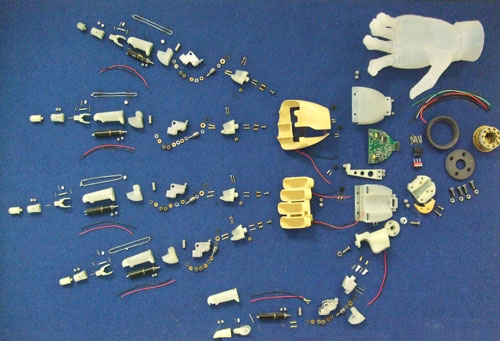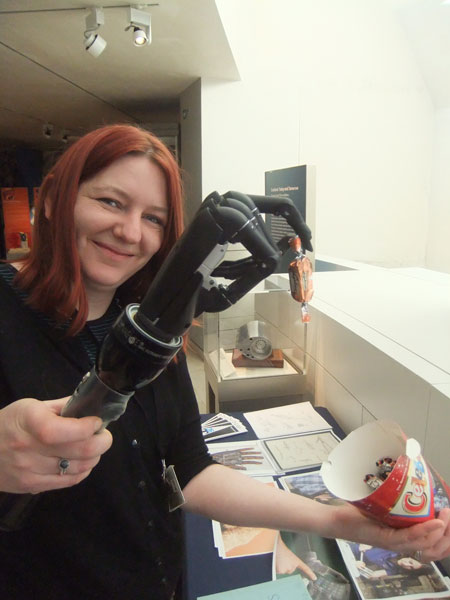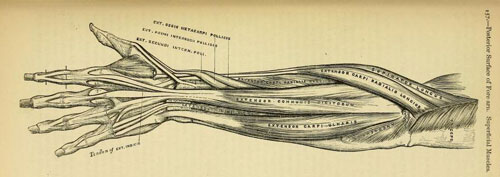One of the questions I have been frequently asked about the prosthetic hands in our Reconstructing Lives exhibition is: how are they controlled?
We use our hands for a wide variety of tasks requiring strength or dexterity and seldom think about how complicated they are and how many muscles and signals work together to make each gesture. For a prosthetic limb the user interface is vital; it needs to be simple and instinctive to operate. The wearer does not want to refer to the instruction manual, call the support desk, or even think about every motion he or she makes.
The hand with the most advanced technology in the exhibition is the i-limb ultra, the latest model from Touch Bionics in Livingston. These hands look amazingly lifelike when in their cosmetic covers, and each finger moves independently which gives them naturalistic poses. We display them without skins so some of the engineering which goes into them is visible.


These hands are operated with battery power, electrical signals and an internal processor. The demonstration model that Touch Bionics sometimes kindly lend us for events comes with a torch, which acts as a replacement forearm to hold the batteries and support the hand. This torch has two pressure sensitive buttons added on the outside: one opens the hand, the other closes it. The hand can be instructed to move into more positions and modes by signalling to its internal software through holding down, or tapping on, the buttons.

Using buttons, and needing one hand to control the motion of the artificial hand, is a cumbersome way of using a prosthesis. Instead, amputees control these hands through sensitive electrical sensors placed on their skin. These detect the tiny electrical signals inside muscles as they contract. Because the muscles which close and open our fingers are in the arm, below the elbow, this can be very instinctive to learn. People with an amputation across the forearm can signal to their artificial hand using the muscles which controlled their fingers.

These prosthetic hands don’t enable their wearers play a piano sonata or touch type – not yet anyway – but they will point one finger to operate a keyboard ‘hunt and peck’ style. There is on-going worldwide research into controlling prostheses directly from brainwaves, which are detected either with sensors on the skin or surgically implanted electrodes. This technology is not yet ready for use outside a laboratory, but is one of many exciting developments which may revolutionise the field of prosthetics in the future.
An example of the first model i-limb from Touch Bionics is also on display in Scotland: A Changing Nation at the National Museum of Scotland, and was one of the objects featured in the 26 Treasures project. We also display the Edinburgh research leading up to this pioneering hand in the Shaping our World gallery.